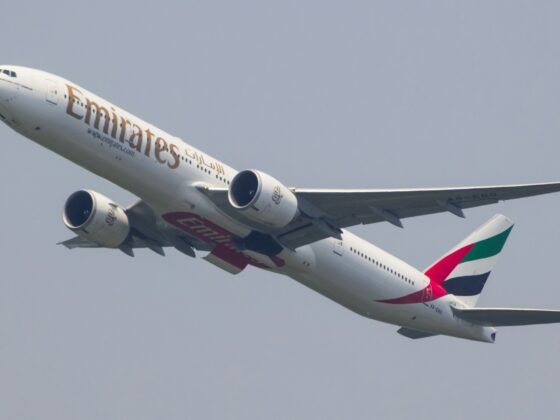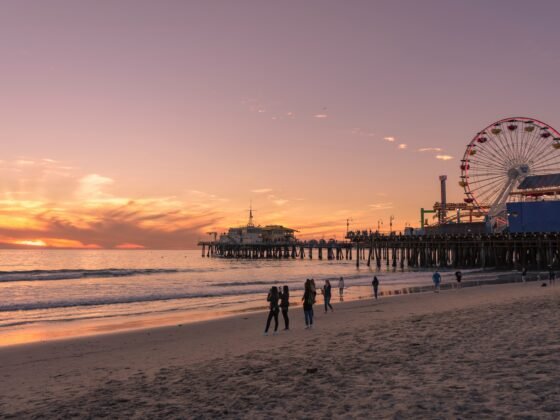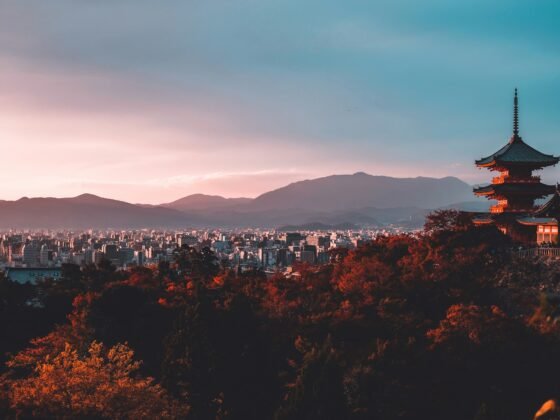Norway Adventure Travel Guide: Ideas and Inspiration
PureTravel Says: “The Kingdom of Norway is in the western area of the Scandinavian Peninsula. Norway has an extensive coastline which faces the North Atlantic Ocean and the Barents Sea and is home to the famous fjords. Norway has natural landscapes with mountains of hundreds of meters, fjords, tall mountain peaks, the northern lights and midnight sun. Norway has a rich culture and history and explore the rich heritage of the Vikings and the Sami. The Sami represent the oldest cultures in Norway and you can visit the stave churches. Norway also has an abundance of adventures and activities waiting to be explored.”
-----------------------------------------------------------
Holiday Highlights
Nature & Sights - Norway is blessed with some amazing natural scenery including Galdhopiggen, which is Norway's tallest mountain standing at 2,469 meters, Nigardsbreen Glacier, the Geirangerfjord and the Vøringsfossen Waterfall, which are all popular nature attractions. Explore the mountains of Aksla, Dalsnibba and Preikestolen. Visit Friluftshuset at Orre where there is an information centre on outdoor life and nature conservation in the area. Gaze in wonder at the incredible glaciers of Kjenndalsbreen, Nigardsbreen and Svartisen. Explore the fjords and waterfalls of Kjosfossen, Laksforsen Waterfall and Steinsdalsfossen. Visit the Lindesnes Lighthouse and follow the Rondane National Tourist Route. See the Old Town in Fredrikstadand the old village of Sogndalstrand.
Fjords & Activities - The Geirangerfjord is 15km long and is included on the UNESCO World Heritage List and is one of Norway’s most visited fjords. When here you can go fishing, take canoe trips and go rafting, riding, summer skiing at Stryn and of course take a fjord cruise.
The Sognefjord is the second longest fjord in the world and Norway’s longest. The area is also known for Rallarvegen, which is the most popular cycling route in Norway and you can take fjord cruises here.
Other fjords include the Nærøyfjord which is 17km long and narrows to 300 meters in places. It is surrounded by 1,700 meters high mountains and is also on the UNESCO World Heritage List.
There is also the The Lysefjordwhich is 40km and up to 422 meters deep. See The Pulpit Rock (Preikestolen), a famous attraction in Ryfylke which towers 604 meters over the Lysefjord. The flat mountain plateau is around 600 meters2 and is thought to have formed with the melting frost 10,000 years ago. There are many walking and hiking trails including the trail to The Pulpit Rock climbing 350 meters and stop at some excellent bathing spots on the way. Visit Kjerag which is the Majesty of the Lysefjord and is 1,084 meters above the fjord. You can walk and hike up the path to the plateau. Kjerag is also a popular location for mountain climbers and base jumpers.
Mountains & Activities - There are numerous mountains to explore in Norway and they have marked trails for walking and hiking and ski tracks in the terrains of mountain wilderness. Many summits can be reached on foot or by skis and do not need any special mountaineering skills, Local guides and a good skill level is recommended for traversing glaciers.
Jotunheimen is in Southern Norway and covers 3,500km2 and includes Norway's highest mountain Galdhøpiggen with its beautiful waterfalls, rivers, lakes, glaciers and valleys. There is some spectacular walking and hiking here whether you require a short stroll or a multi-day epic trek. At Jotunheimen is Norway's most popular national park and is recommended for cross-country and alpine skiers, cyclists and climbers. You can also go glacier walking, rafting, caving, canyoning and riding. The most popular hiking route is the path from Memurubu to Gjendesheim, along the narrow Besseggen ridge. You will have views over the emerald colored Lake Gjende which is 984 meters above sea level. Travel north over north over Lake Bessvatnet which is 1,373 meters above sea level.
Jotunheimen has some incredible flora and fauna including the beautiful glacier crowfoot which is the highest growing flowering plant at 2,370 meters. Purple saxifrage and rose-root grow at 2,300 meters and there are also calciferous rocks growing lime-loving plants, such as the sweet little mountain avens. Most of Jotunheimen actually lies above the timber line, but mountain birch grows freely and there are trees at 1,200 meters. You can see mountain pine, black alder, mountain birch, elm and hazel. Jotunheimen is also home to reindeer, elk, deer, roe, fox, marten, mink, wolverines and lynx. Most lakes and rivers have trout and birdlife includes grouse, golden eagle and falcon.
You can stay up in the mountains where there are maintained cabins and lodges. You will find traditional solid timber houses and arts and antiques. You can also stay at a farm and enjoy the quiet atmosphere, peace and tranquility. You can also camp here. You can get here by car train or bus and when here the best way to get around is by walking, skiing, cycling and riding.
Other mountains include the vast mountain plateau of Hardangervidda with Northern Europe’s largest stock of reindeer. Visit Dovrefjell mountain home to the musk ox and Finnmarksvidda, home of the Sami people. Lyngsalpene are located above the Arctic Circle and Rondane which is Norway’s oldest national park and home to wild reindeer and several peaks over 2,000 meters. Sunnmørsalpene has majestic peaks and a rugged alpine and off-piste skiing here is recommended.
Aurora Borealis - The North Cape in Finnmark is one of many good places in Northern Norway to see the northern lights or the aurora borealis which is a mystical moment. The lights are most frequent in late autumn and early spring with October, February and March the best months for auroral observations and the highest northern lights frequency is between 6pm and 1am.
History - The earliest signs of human settlement in Norway date back to 9000 BC. Norway was united to one kingdom 900 AD and got its own constitution in 1814. There are many historical and cultures sights in throughout Norway from the vibrant capital city Oslo to the beautiful city or Bergen.
Visit Oslo and see the dominating Akershus Castle & Fortress, art at the Astrup Fearnley Museum and Oslo’s 15 acres of Botanical Gardens, which feature over 7,500 plants from around the world. Visit the sights of the Bygdøy Peninsula, Oscarshall Castle, designed by Johan Henrik Nebelong to reflect a blend of Romantic and English neo-gothic styles and the twin-towered Oslo Town Hall which was completed in 1950 to commemorate the city's 900th anniversary,
Bergen is charming and beautiful and whilst here visit the Bergen Aquarium with a big outdoor tank with seals and penguins, Bergen Art Museum with 18th and 19th century works by international and Norwegian artists and Bergen Cathedral, also known as St Olav's Church. Architectural sights include the 1770 Damsgård Manor a fine example of 18th-century rococo timber architecture and Fantoft Stave Church built originally in 1150.
-----------------------------------------------------------
Regions and Cities
There are seven main regions to Norway:
East Norway - The largest region which surrounds the capital city of Oslo, is also where the greatest number of people live.
Central Norway - Home to the ancient city of Trondheim.
Northern Norway - Home to the spectacular landscapes of the great fjords, midnight sun, the traditional Sami culture and the intriguing city of Tromsø.
South Norway - The country's undulating coastline, home to Kristiansand.
West Norway - Home of the famous fjords, as well as the cities of Bergen and Stavanger.
Svalbard - Gateway to the Arctic islands.
Jan Mayen - The eerily desolate area is typified by mountains and volcanic islands within the Arctic Ocean and is partially covered in glaciers in winter.
Cities:
Oslo - Capital city of Norway with an impressive concentration of museums with national importance, lively nightlife and strong cultural scene.
-----------------------------------------------------------
When To Go
Norway has a surprisingly temperate climate thanks to the Gulf Stream. The average maximum temperatures in July are around 16C in the south and 13C in the north. In January, the average maximum temperature is 1C in the south and -3C in the south.
-----------------------------------------------------------
Top Tips
- Some Norwegian roads are closed during the winter.
- The age limit for purchasing beer and wine is 18 and for spirits it is 20.
- Smoking is not permitted in public buildings and other places open to the public.
- On arrival in Norway, you must show a valid passport or other official document to establish your identity and nationality.
- The Norwegian weather is changes day to day, regardless of season so bring clothes which can be layered up.
- Remember to bring proper walking shoes/boots and warm clothing.
-----------------------------------------------------------
Suggested Itineraries
- Capital city Oslo
- Bergen and the harbour
- Preikestolen’s views
- Staves churches including at Heddal, Norway’s largest stave church
- Wooden houses at Roros which is on the UNESCO World Heritage List
- Jotunheimen Nation Park with hiking trails through glaciers
- Fjords including Geirangerfjord
- Alesund, an Art Nouveau city
- Trondheim’s Nidaros Cathedral
- Cross the arctic circle on the Kystriksveien Coastal Route
- Lofoten and Svalbard islands
- Europe most northernmost point at Knivskjelodden
- Vibrant city of Tromso
-----------------------------------------------------------
UNESCO World Heritage Sites
- Bryggen
- Urnes Stave Church
- Røros Mining Town and the Circumference
- Rock Art of Alta
- Vegaøyan -- The Vega Archipelago
- Struve Geodetic Arc
- West Norwegian Fjords – Geirangerfjord and Nærøyfjord
-----------------------------------------------------------
Festivals, Events and Anniversaries in 2014
This year marks the 70th Anniversary of Edvard Munch’s Death - We’re all familiar with the haunting painting ‘The Scream’ which was created by the famous Norwegian artist, Edvard Munch. And this year marks the 70th anniversary of his death in Oslo in Norway in 1944. Both Oslo and his birthplace of Ådalsbruk will hold special exhibitions and talks on the man and his psychological themed works.
Public Holidays in 2014
January 01 - New Year´s Day
April 17 - Maundy Thursday
April 18 - Good Friday
April 20 - Easter
April 21 - Easter Monday
May 01 - Labour Day
May 17 - Norway National Holiday
May 29 - Ascension Day
June 08 - Whitsun
June 09 - Whit Monday
December 25 - Christmas
December 26 - St. Stephen´s Day
-----------------------------------------------------------










